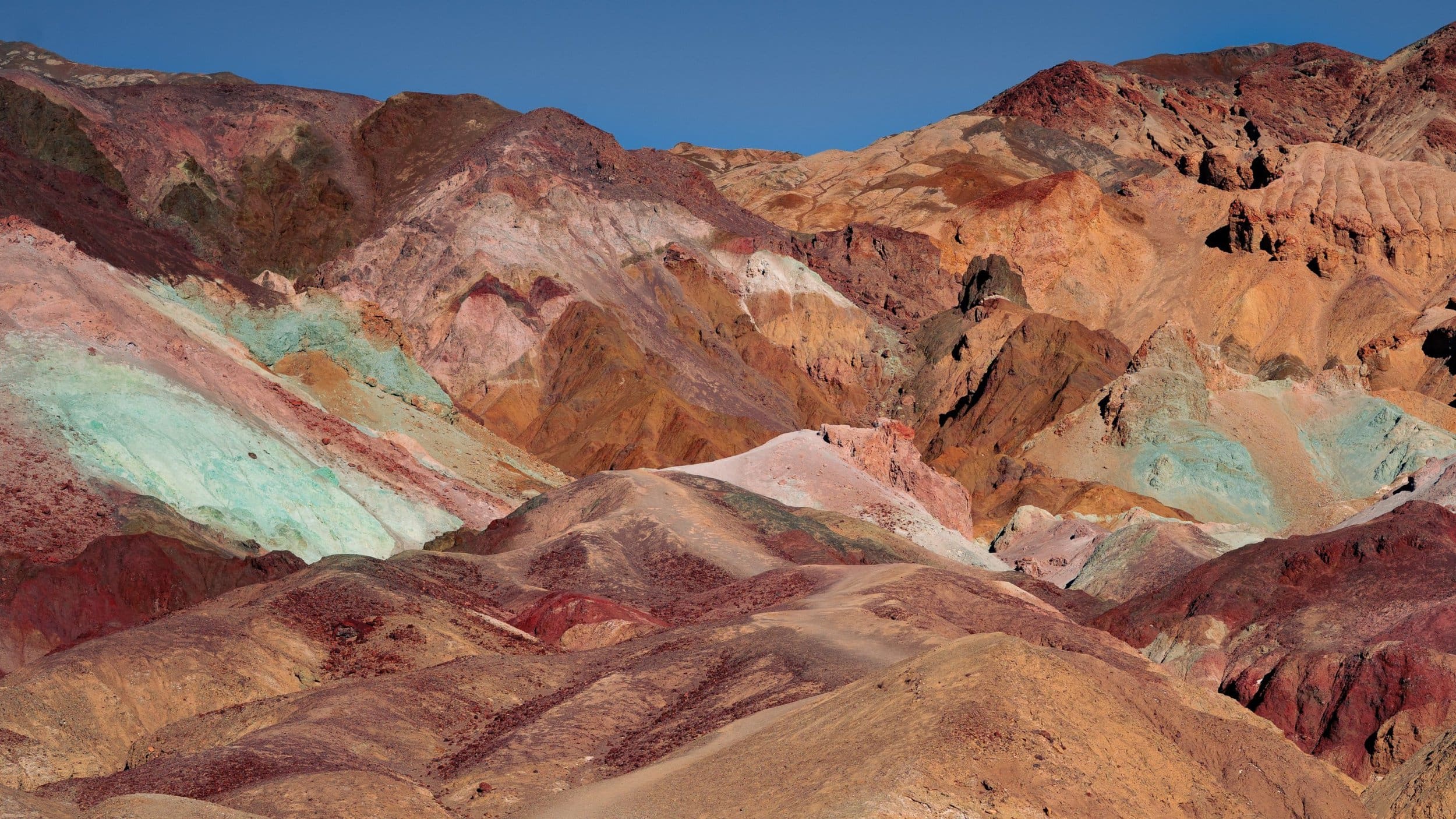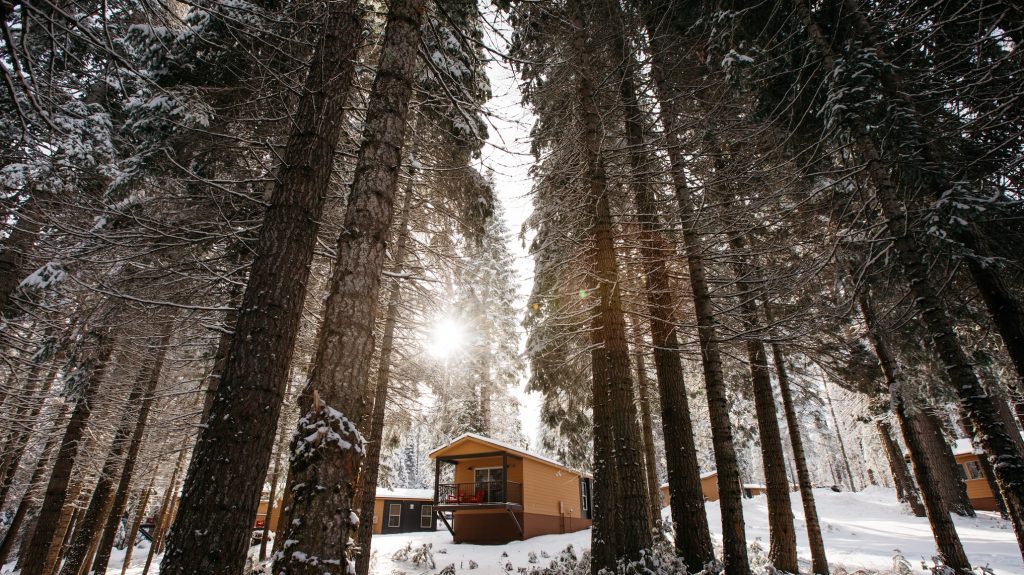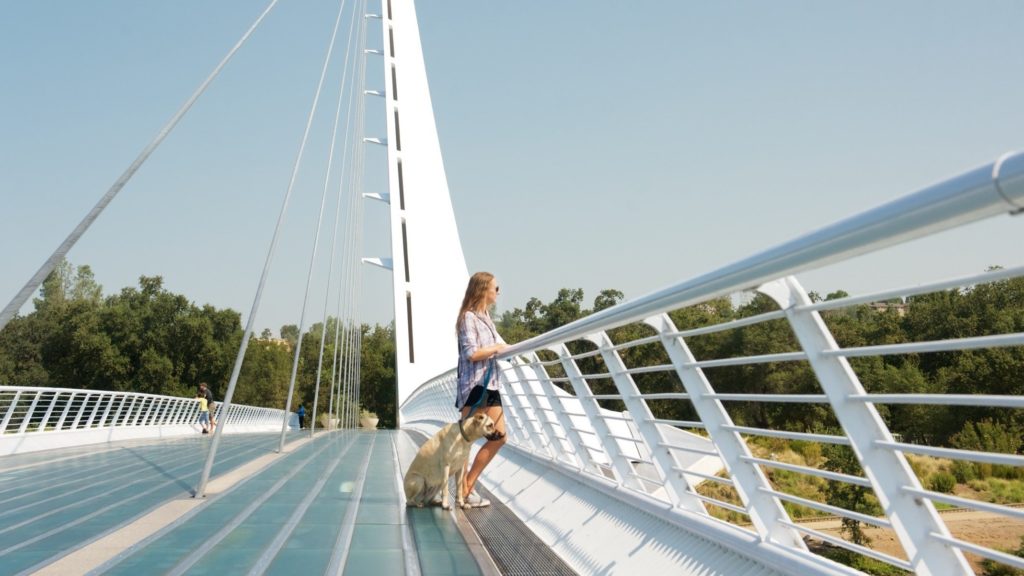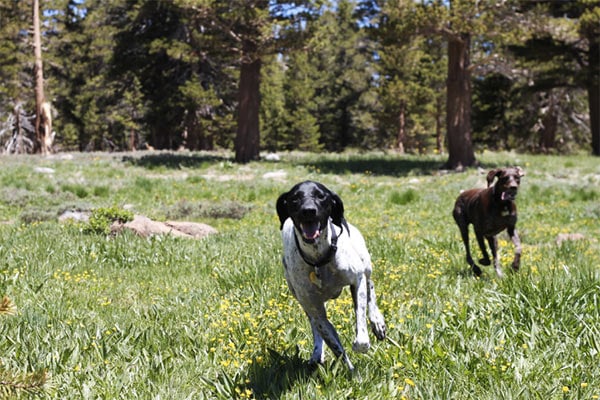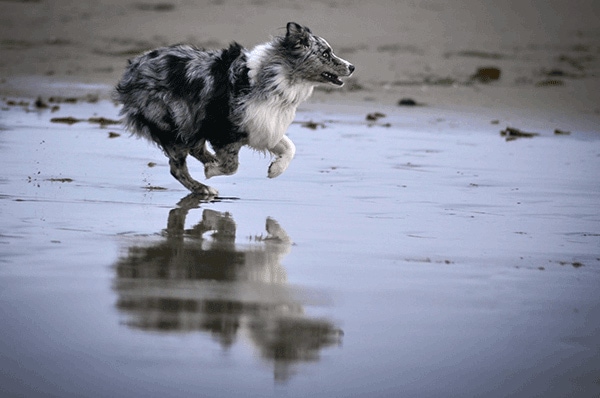Think Death Valley is nothing but a parched and endless patch of wind-blown sand? You’ve been watching too many old TV shows. This Southern California national park is in reality one of the most colorful and breathtaking places on earth, and inevitably takes first-time visitors by surprise. Nowhere else on the planet will you see salt-crusted badlands 282 feet below sea level walled in by mountains 11,000 feet high. Geological oddities abound, all encased in air so clear it seems like it could shatter. The valley’s human history, incorporating cowboys, Indians, burro-packing prospectors, outlaws, stranded pioneers, wealthy eccentrics and 20-mule teams hauling borax, is equally rugged and colorful. So what’s there to do with your dog? The quick answer: prepare to be awed.
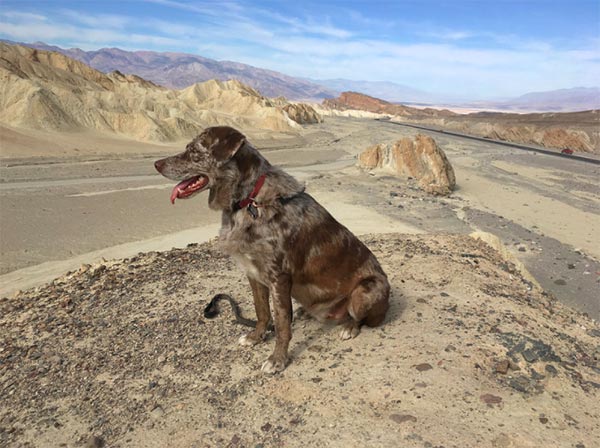
Exceedingly pleasant temperatures—low 60s in the daytime, low 40s at night—make January and February the ideal time to visit Death Valley. This is one of the best drive-through parks in the country, with scores of fascinating sights visible from the road. While dogs are allowed in campgrounds, in developed areas and on or within 100 yards of paved roads, they’re not allowed on trails or boardwalks; neither are they supposed to be left in your car while you take a quick hike. But don’t let this stop you: within the national park are more than 700 miles of backcountry roads where the two of you legally can walk if connected by a leash. Two scenic roads recommended by the park service are Twenty Mule Team Canyon Road and Titus Canyon Road into the narrows. With a high-clearance vehicle, you’ll find much more to explore.
When it comes to dog-friendly lodging, park visitors are in luck. Stovepipe Wells Village, one of the main lodging/refueling places in the park, welcomes dogs at no charge in its clean if spartan motel rooms. The adjacent RV park is dog-friendly, too, as is the nearby national park campground. The rustic Panamint Springs Resort near the park’s western boundary is another choice; it welcomes dogs in motel rooms, tent cabins and campground sites.
A word of advice: Although cell-phone service has improved in recent years, coverage is extremely spotty. Stop by your bank for a roll of quarters before leaving home and prepare to stand in line for an old-fashioned pay phone. Internet connections likewise are nonexistent or unreliable away from the visitors’ center and hotels. But then, you wouldn’t be here if you didn’t want to get away from it all. Right?

